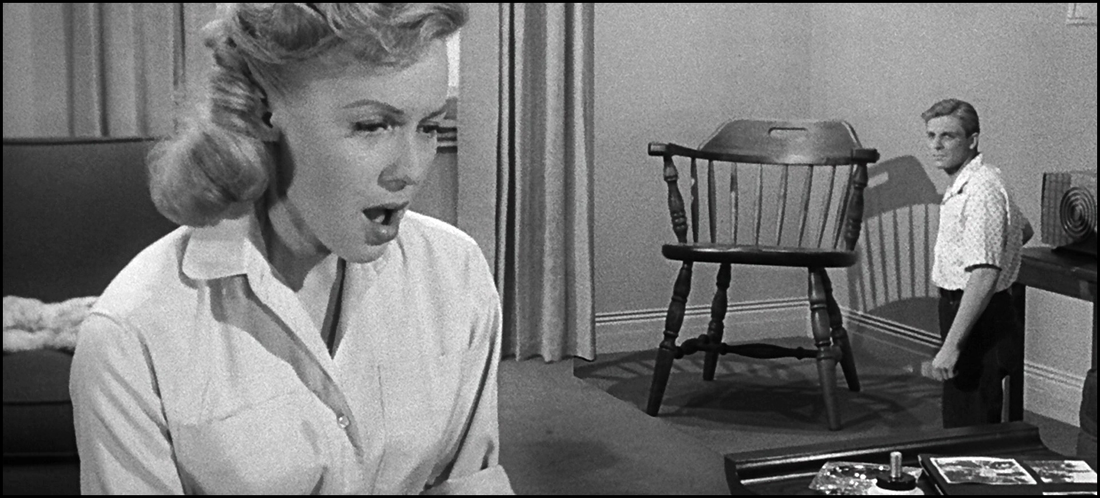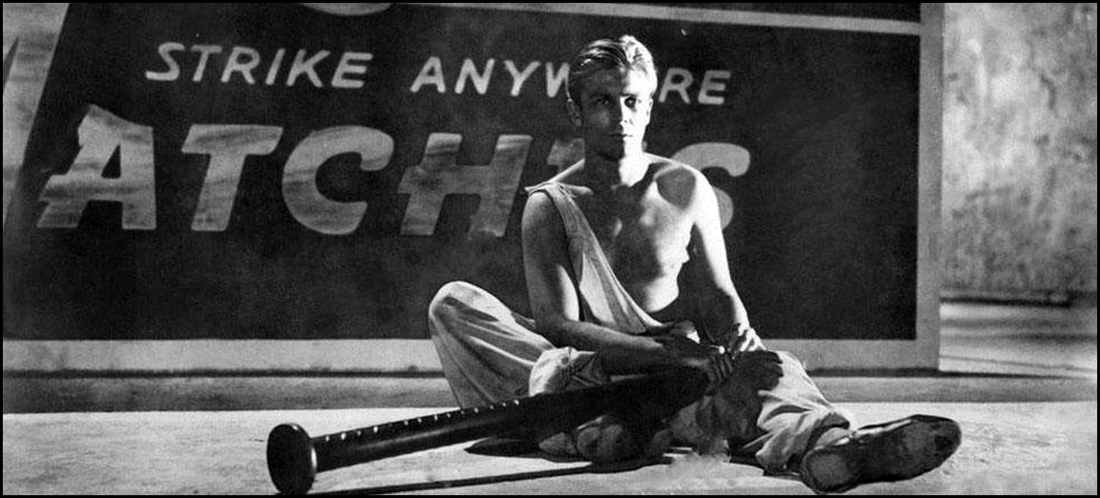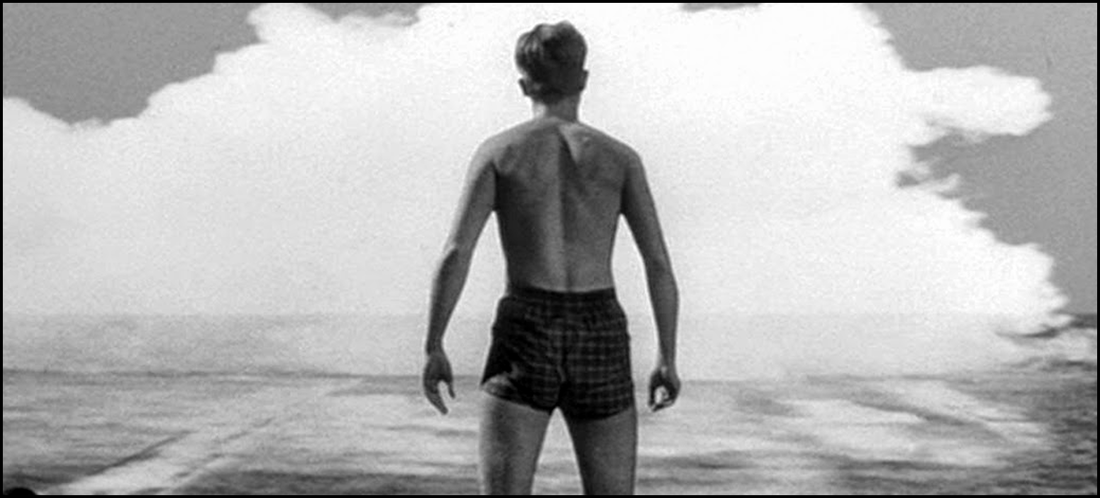This was best demonstrated to me all the way back in grade school. One morning – while our class was preparing for what we were told was a ‘pop quiz’ – we were all focused on getting out our notebooks (as instructed) when the teacher from a neighboring class marched into our room, shouted out a sentence or two about something in the cafeteria (honestly, it escaped me), held up a toy clicker and clicked it three times, and then exited. Next, our teacher instructed us to write down exactly what happened. Everything we saw and heard. Lo and behold, this event WAS the pop quiz!
A bit confused, I sat there for a moment, getting my bearings, and then I started to write. I jotted down how I was doing as instructed when I was surprised by a guest who clicked something three times and then left. We were given five minutes, and I probably took only one or two. I even tried running the memory over in my head (quickly) to try to figure out what she said, but I couldn’t decipher any word other than ‘cafeteria.’ All that truly stuck with me was that it was a teacher, she had a clicker, and I counted three clicks.
Where am I going with this?
Well, you’d be surprised at how many of my peers couldn’t remember what was said exactly, either. Some of the students spent a paragraph talking about what the intruder was wearing; such a thought never even occurred to me. And I was surprised by the number of classmates who thought they heard five clicks instead of three! That couldn’t be! I was sure there were only three!
Obviously, some of this is based on perception: how well did I hear the event, how close was I to it when it took place, how well could I see it, and so on and so forth. As it turned out, folks closer to the door were better with visual details, and those of us further back were better recalling the specifics of sound. But the point behind the entire lesson – so far as the Illinois educational system was concerned – was that not every person who watches something necessarily sees the same thing. Thus, our teacher proved in a rather simple fashion that there is value in the opinions of others: not everything taught will mean the same thing, and not everything viewed will have the same impact.
The point I make here is that a film like The Incredible Shrinking Man is – in short – gob-smackingly brilliant in delivering one man’s story … but I’ll bet there are dozens of different lessons that can be gleaned from a single viewing.
From the product packaging: “Six months after being exposed to a mysterious radiation cloud, suburban everyman Scott Carey finds himself becoming smaller … and smaller … and smaller – until he’s left to fend for himself in a world in which ordinary cats, mousetraps, and spiders pose a mortal threat, all while grappling with a diminishing sense of himself.”
With only a running time of 81 minutes, one might think a film like The Incredible Shrinking Man had little depth … but he’d be categorically wrong. In fact, I could make a good case for the film being one of the most thought-provoking Science Fiction films ever. Much of this is owed to the fact it’s an entirely relatable experience – what would you do if you were trapped in the same set of circumstances? But where other flicks build a reputation on their visuals, Shrinking Man pairs its scenes with ideas. It’s chocked full of symbolism, and all of it is focused to convey not only a good story but also an expanse of grand storytelling. Don’t get me wrong: the visuals are outstanding – clearly some of the best of its era – but they all serve to reinforce the classic struggle of man versus … well … himself.
Yes, our everyman Carey (played convincingly by the underrated Grant Williams) puts his faith in science to find a treatment for what ails him; but isn’t it science that put him in this very predicament in the first place? Over the years, many talking about the film have touched on that dastardly radioactive cloud from the film’s set-up as being the cause of his condition; yet if you’re watching closely you know that Carey lived six months without suffering any ill effects from the said exposure. That’s because screenwriters Richard Matheson and Richard Alan Simmons cleverly inserted another possible catalyst (an incident involving noxious insecticides) that very well may have been the triggering event. Why was this a smart decision? Well, how many regular folks run the risk of exposure to radiation? I suspect the numbers are small. But what if the cause of this unprecedented condition was owed to an unknown combination of chemicals? This is exactly the kind of plot development that gets a person thinking not only about Carey’s life but his own as well.
Very soon, the loss of a regular wardrobe becomes the least of our protagonist’s worries. He’s suddenly plunged into a world of self-doubt wherein he questions every facet of his life – his health, his sanity, his role as a provider, and even his abilities as a faithful partner to his loving wife Louise (Randy Stuart). Once he’s reduced to half his normal size, he likely can’t please her sexually; and this added stress only forces him into the arms of Clarice (April Kent), the short person who’s made a career in circus sideshows. Truth be told, the film never shows that their relationship is consummated, but it’s strongly implied. (Curse you, 1950’s film censors!) But his world comes crashing down again when he shrinks even further, eventually taking up residence inside a dollhouse for comfort and safety. The man of the world of our opening – the vacationer who had the world at his fingertips – has been reduced to little more than the size of a child’s plaything.
What’s the point of all these diminishing returns?
The beauty of art is that the power of interpretation is left up to those who view it.
Any and all morals are acceptable, and that’s because veteran director Jack Arnold knew more than a thing or two about constructing SciFi with a message. His 1953 It Came From Outer Space – based on a story by the legendary author Ray Bradbury, no less – kind of broke the established Hollywood mold as it applied to Science Fiction. Lesser (or more routine) films pitted aliens against Earthlings in a race for survival, and they almost always had regular men and women coming out triumphant. What purpose did Arnold’s aliens serve? Were they invaders? Were they expansionists? Were they occupiers? No. Honestly, they just crashed here, found us uninteresting, and wanted to go home. Imagine that? We and our big blue ball weren’t really interesting enough to warrant their attention. They saw that, they said so, and they just wanted to go home. Talk about your shrinking self-esteem!
Still not buying it?
Well, his This Island Earth (1956) resembled conventional Science Fiction a bit more. In this adventure, an alien species comes to our world with the specific mission of enlisting our support in their winning a losing war. Instead of coming here to wipe us out – as tends to so often be the case in far too many genre releases – these aliens needed us to help them avoid their extinction. (I suspect this film probably did more for our morale than It Came From Outer Space.) Again, for clarity’s sake, the Metalunans of the picture only wanted our help. The fight for survival was theirs, and they were only looking for an ally. Why, this just didn’t happen in Science Fiction! SciFi was about blasters and spaceships and aliens who melt our brains! How can this happen? Granted, the picture takes a turn in its second half, perhaps succumbing to the more traditional recipe, but it’s still a film refreshing for audiences because they’re delivered something other than the run-of-the-mill extraterrestrial exploitation that makes up so many space sagas. (For the record, Arnold’s work on the picture is uncredited, but scholars have confirmed the director’s stewardship of it.)
While these are notable contributions from a man known largely as a studio workhorse, Arnold’s legacy in Science Fiction doesn’t end there. He brought both Creature From The Black Lagoon (1954) and Return Of The Creature (1955) to the silver screen. In 1955, he also delivered Tarantula – one of the better giant radioactive bug movies mentioned above – to crawling life. In 1955 and 1956, he brought four episodes of the innovative Science Fiction Theater to television. 1958’s The Space Children and Monster On The Campus were a bit more routine as studio genre entries, and he closed out his 1950’s with a pair of episodes of the short-lived World Of Giants … a television show that took him back into the realm of shrunken man.
There are more entries in his career in Science Fiction and Fantasy, but I think I’ve made my point: Arnold was a pioneer when it came to developing and delivering stories about far more than just monsters, science gone bad, and spaceships. His body of work ably demonstrates that SciFi is the realm of ideas … and Shrinking Man was always bigger than Carey’s ultimate Fate would allow.ling life. In 1955 and 1956, he brought four episodes of the innovative Science Fiction Theater to television. 1958’s The Space Children and Monster On The Campus were a bit more routine as studio genre entries, and he closed out his 1950’s with a pair of episodes of the short-lived World Of Giants … a television show that took him back into the realm of shrunken man.
There are more entries in his career in Science Fiction and Fantasy, but I think I’ve made my point: Arnold was a pioneer when it came to developing and delivering stories about far more than just monsters, science gone bad, and spaceships. His body of work ably demonstrates that SciFi is the realm of ideas … and Shrinking Man was always bigger than Carey’s ultimate Fate would allow.
As for the special features? As is very common with Criterion releases, this one is very good: worthy of note is the examination of the film’s pioneering special effects (which hold up quite good considering all of this is decades before CGI was even a dream). There’s also a very informative chat with screenwriter Richard Matheson’s son (also Richard) who gives a fabulous ‘time and place’ recounting of his father’s life and experiences that influenced his work; in short, it’s quite possibly one of the best of its kind I’ve had the privilege to see. There’s an interesting conversation between director Joe Dante and Dana Gould; they don’t bring much new to light (especially if you’ve watched the other shorts), but it’s clear both are fans of director Arnold and screenwriter Matheson. There’s an archival interview with Arnold that’s a fantastic find as he specifically addresses the work of bringing the film to the silver screen despite some studio reservations. And I’d be a fool if I didn’t mention the commentary track: film historian Tom Weaver and horror-music expert David Schecter sound off on a lot of ‘little things’ (snicker snicker), but – being entirely honest – I want to give it another listen as my first impression was that they focused on some trivial aspects – the hardcore nuts and bolts of a feature production – that ends up a bit dry for me personally. I would also want to add that my 4K UltraHD had an issue with the soundtracks for two of special features: I had to go into my player’s control menu and change the sound settings from “automatic” to the more general playback in order to hear the folks speaking. This happens from time-to-time with these 4K disks, but it’s a minor inconvenience.
Highest recommendation possible.
Without a doubt, The Incredible Shrinking Man stands as one of the greatest Science Fiction films of the 1950’s, and it deservedly should stand side-by-side with such heavyweights as The Day The Earth Stood Still (1951), The Thing From Another World (1951), Them! (1954), Invasion Of The Body Snatchers (1956), and Forbidden Planet (1956) in any library. Though its story is clearly grounded in the anti-Atomic sensibilities of its era, there’s still a timelessness to the central idea of a man being overwhelmed and surpassed by a world he, in part, helped create. Its ending might seem a bit too philosophical, too spiritual, or too existential for most viewers, but I’d argue it still homes in on an age-old SciFi conceit wherein man confronts his place in the universe and is humbled as a consequence of the resulting epiphany. A work of genius.
In the interests of fairness, I’m pleased to disclose that the fine folks at Criterion provided me with a Blu-ray of The Incredible Shrinking Man by request for the expressed purposes of completing this review; and their contribution to me in no way, shape, of form influenced my opinion of it.





 RSS Feed
RSS Feed